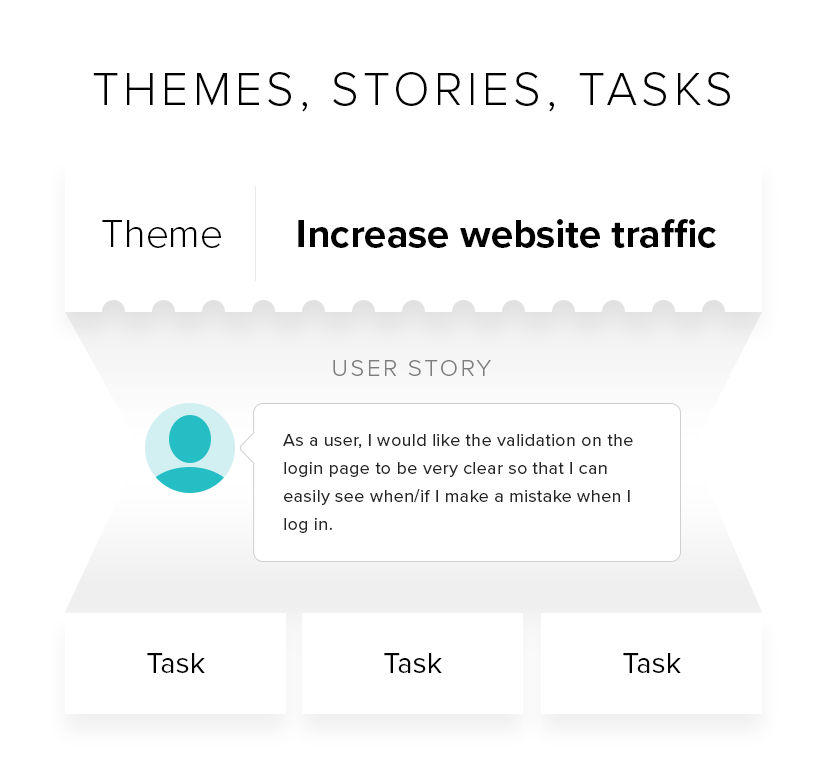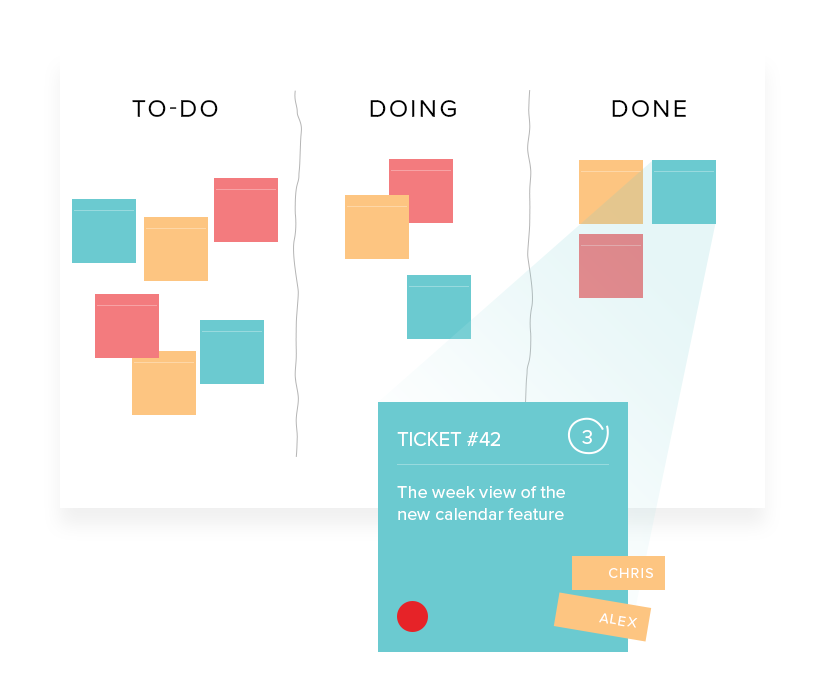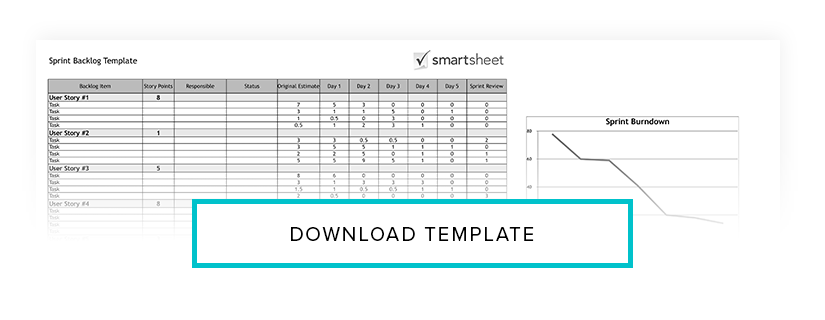How to Create a Lean Marketing Plan
May 24, 2017If you’re like most marketers we speak to, your team is small and often overwhelmed with a high volume of marketing projects. Your CEO (who is also your boss) approaches you almost every week with a “game-changing” new marketing idea. Although the ideas are great, you find it difficult to complete projects when priorities are constantly shifting.
Sound familiar?
You’re not alone. Many marketers feel trapped in reactive marketing processes, and find it challenging to complete projects efficiently while balancing changing priorities.
Implementing a lean marketing methodology can help you work faster, accommodate new ideas, balance shifting priorities, and get more high-quality work done. In this blog, you’ll how to activate the methodology by creating a lean marketing plan for your team.

What is lean marketing?
1. Fast
A lean marketing methodology consists of short, iterative cycles. These are called “sprints,” and they can be as short as two weeks or as lengthy as two months. Short sprints are ideal because they allow you to adapt quickly to shifting priorities, product updates, and marketing conditions, which are all important considerations for a marketing leader.
2. Focused
At the beginning of each sprint, you will determine which projects to focus on during the period. Lean marketing helps you to stay focused on the project you’ve committed to. Great CEOs have an idea a minute, but that can be distracting for marketers. When they come to you with an idea, great! Just add that idea to the backlog and prioritize it for the next sprint.
3. Prioritized
Prioritizing your work allows you to approach your projects by importance, and it’s key to keeping focused and delivering excellence. Every project should have a clear goal, success metrics, effort evaluation, and priority ranking. These project criteria should be transparent to the entire company. Management should approve project prioritization at the beginning of each sprint to ensure they align with the company’s business goals.
4. Forward-looking
Lean methodology forces marketers to plan ahead and consistently reevaluate projects. This can be accomplished with “daily standups” which are short 15-minute team meetings to check in on project status and deliverables. The team will discuss any “blockers” or delays they foresee arising.
How To Create a Lean Marketing Plan
Leadership Support
You can’t be lean alone! Implementing a true lean marketing plan needs support from the top. Explain to your leadership team the benefits of lean marketing, that the marketing team will be able to work more efficiently, complete more projects, and quickly iterate based on learnings. Leadership must commit to seeing marketing projects through to completion. This means that any last minute ideas will be placed in the backlog and addressed in future sprints. The key benefit to leadership is marketing efficiency accomplished without additional headcount.
Build Your Scrum Teams
Depending on the size of your marketing organization, build teams of four to six marketers to tackle your projects. Assign a project owner for each team, which is typically a marketing manager. The project owner is responsible for maintaining the backlog and making sure each project (also called a “user story”) has all the necessary pieces (goal, tasks, etc.) and meets the interests of the stakeholders (customers, sales team, CEO, etc.). Although there is a project owner, all scrum teams should be self-led and self-managed. Ensure that your teams are set up so that all projects can be accomplished by only the team members; any outside dependencies could cause delays.
Create a User Story Backlog
A user story is one or two sentences describing who the project is meant to help, the goal of the project, and why it is important. The user story should also define success metrics that must be met to consider the project complete. Each user story should fold up into an overarching marketing goal, or theme. Themes are overarching marketing goals that will drive all of your lean marketing projects. For example, a theme could be “improve website user experience.”
Once your themes are established, create a backlog of your user stories (we’ll talk about how to prioritize them later). Here’s an example of a user story:
As a user, I would like the validation on the login page to be very clear so that I can easily see when/if I make a mistake when I log in.

Organize Sprint Planning
As mentioned before, sprints are defined allotments of time for the scrum teams to complete their projects. Step one of sprint planning is to work with your scrum teams and leadership team to agree upon sprint length. Then, prioritize your backlog of user stories, and choose the top priority projects to work on in your first sprint. When prioritizing your stories, consider the effort required for each project, and calculate what your scrum teams can accomplish in the upcoming sprint.
Hold Standups
Once you’ve kicked off your sprint, the project manager should report on the team’s daily progress. A quick and easy way to accomplish this is by holding daily standups. A daily standup is a quick 15-minute meeting first thing in the morning where each member the scrum team reports on the work completed the day before and what they plan to tackle that day. Standups create an environment of transparency and accountability among scrum team members.
Track Task Progress
Use a Kanban board to track the progress of tasks. Kanban translates to “card” in Japanese. On a Kanban board, each task within a project is listed on a card and then placed in a table (with sections labeled ‘to-do’, ‘doing’, and ‘done’) to help visually display the progress of each task. Visualizing your work in this way allows you to limit work in progress, focus on tasks in progress, and continuously improve your team effectiveness. One of our favorite Kanban tools, Leankit, is a SaaS platform that is accessible via desktop and mobile.

Report on Project Progress
Daily standups and an updated Kanban board give you a general idea of the project status, but a burnout chart is a definitive way to report on project progress. A “burnout” chart is a list of work left to complete in that sprint to help you keep tabs on team progress. The project manager is responsible for creating the list of tasks for each project and tracking its completion in the burnout chart. Here’s a great template for tracking sprint backlog burnout.

Learn from your Lean Marketing Efforts
Like all good marketing strategies, test, learn, and iterate from your lean marketing efforts. The benefit of lean marketing is that when something isn’t working, lean marketing allows you to learn and shift efforts quickly.
Creating a lean marketing plan for your team will help you to prioritize marketing projects and push back on last minute priority shifts. It will give your team the clear direction they need to focus on projects, and the time and space needed to complete them with a high degree of excellence. Overall, lean marketing will help your team work faster and more efficiently to drive more marketing generated revenue for the business.
